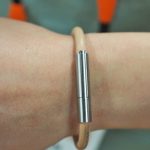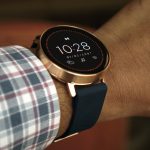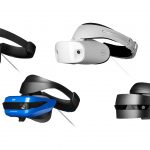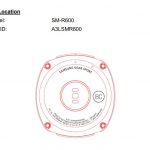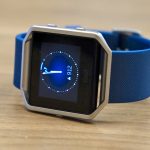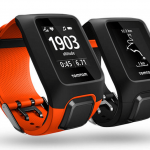Pebble 2 Review: This Sporty Smartwatch Swings At Fitbit Instead Of Apple
Eric Migicovsky isn’t shy about calling the Pebble 2 a pivot.
The CEO of Pebble, who once fancied his company’s smartwatches as underdogs in a fight against Apple, is now picking a different target. The sportier Pebble 2, he says, is supposed to compete not with the Apple Watch, but with dedicated fitness trackers such as Fitbit.
Here’s the elevator pitch: The Pebble 2 does step counting, sleep tracking, and heart-rate monitoring for $20 less than a Fitbit Charge 2. But it’s also a full-blown smartwatch, with a black-and-white display for notifications, customizable watch faces, and lightweight third-party apps. (It’s coming to Walmart and Amazon later this month, followed by Best Buy, Target, and Pebble.com in November.)
“It’s really doubling down on what we think are the critical things smartwatches need to do on a daily basis, which are health and fitness, as well as notifications and time management.” Migicovsky says.
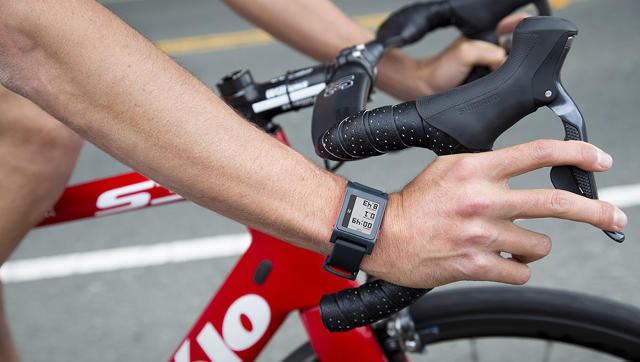
Full disclosure: As someone who’s used smartwatches for the past few years—starting with ]the original Pebble in 2013—I think of fitness tracking as a nice-to-have feature rather than a core component. I’m more interested in notifications and quick actions, and have always found Pebble to be more efficient on those counts than other smartwatches, including the Apple Watch. (I’ve been wearing a Pebble Time Steel for much of the last year.) Still, I understand that health and fitness is currently the low-hanging fruit of the wearable market, which even Apple has acknowledged in its marketing of the Apple Watch Series 2.
The last year hasn’t been easy for Pebble, which laid off a quarter of its staff in March, but the newfound focus may be company’s best chance to become a sustainable business. To that end, Pebble’s pivot to health and fitness doesn’t quite feel complete, as the Pebble 2 may be too large for some wrists, and lacks some of Fitbit’s social features. But with its rich notifications and ability to run apps, it’s undeniably a better smartphone companion than a Fitbit, which makes it a contender for those who don’t want to buy a fitness tracker that’s only a fitness tracker.
Slimmed-Down, But Still A Smartwatch
With wearables, even slight reductions in size can make a big difference in perception, and the Pebble 2 is the perfect example.
In actual measurements, the Pebble 2’s body is only about 3 mm narrower and about 3.5 mm shorter than the original Pebble. It’s also roughly 2 mm thinner if you don’t count the Pebble 2’s protruding heart-rate sensor on the underside. (Laid flat, the two devices have nearly the same thickness.)
But after opening up the box, I was shocked by how small the smartwatch looks compared to the original. In shaving off a couple millimeters here and there, the Pebble 2 seems far less bulky. My wrists are pretty skinny, yet I didn’t feel overly self-conscious wearing the Pebble 2 like I used to with the original.
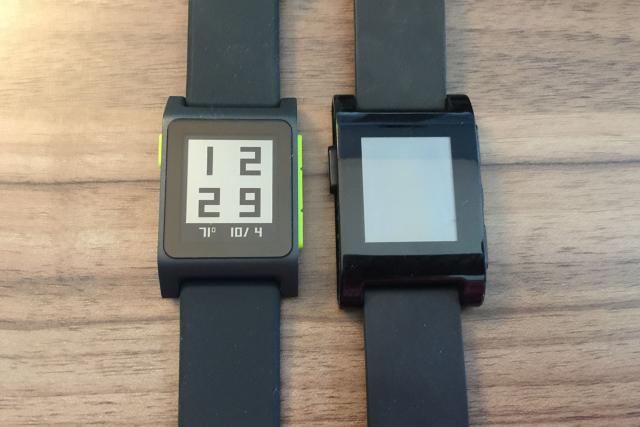
Not everyone will feel the same way, as the Pebble 2 is still much longer than it is wide. My wife, upon trying the Pebble 2, said it was “huge” on her wrist, adding that she found the style so off-putting that she wouldn’t even consider wearing the watch. Compared to a Fitbit, Pebble’s size is inherently compromised by its display and smartwatch innards.
This is not an unsolvable problem for Pebble. Last year, the company released a round smartwatch that was much thinner than previous Pebbles, and any other smartwatch for that matter. The Pebble Time Round didn’t have the same battery life—lasting about two days on a charge instead of one week—and wasn’t sufficiently water-resistant for swimming, but it was stylish enough for even the smallest wrists.
Migicovsky won’t comment on whether Pebble is working on a sequel to the Pebble Time Round, but he promises the company will always offer watches in multiple screen sizes and shapes. (The Pebble Time 2, a larger-screened follow-up to last year’s Pebble Time Steel, is coming later this year, with a heart-rate sensor and rubberized strap instead of leather to emphasize the new fitness focus.)
“I think one of the lessons that we’ve learned is you need to have variation, pretty simply because people have different wrist sizes,” Migicovsky says.
Fitness Focus
Pebble didn’t pivot toward health and fitness overnight. Since last year, the company has been building up its own health features, rather than relying on third-party tracking apps from Misfit, Jawbone, and others. Out of the box, the Pebble 2 counts steps, detects exercise, and automatically measures light and deep sleep.
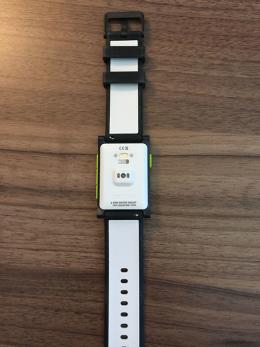
Most of those features are also available in last year’s Pebble Time watches, but the Pebble 2 is the first to include a heart-rate sensor. At the moment, the sensor can check your pulse throughout the day and help you reach a target heart rate during exercise, but over time, Pebble plans to add new uses and tap into heart rate to improve overall health tracking accuracy.
Compared to Fitbit, Migicovsky says Pebble 2’s big advantage is that it can provide more fitness information without a smartphone. For instance, you can view a full week’s history and averages, or keep an eye on workout times and heart rate simultaneously. The Pebble 2 also provides occasional words of encouragement to help you overtake your averages.
There’s just one big fitness tracking feature that the Pebble 2 is missing compared to Fitbit and the Apple Watch, and that’s the ability to share stats and accomplishments with others. Migicovsky counters that you can sync your data to Apple Health or Google Fit, which in turn allow sharing through services like Runkeeper and Strava, but that’s a roundabout solution, and it robs Pebble of any potential network effects that might be gained from built-in sharing. Pebble will need to come up with something more seamless.
Still Getting Smarter
Just because Pebble has focused on fitness doesn’t means the company is ignoring smartwatch basics. Over the past year, the company has vastly improved its smartwatch platform through a series of software updates.
Pebble still uses push buttons instead of a touch screen or fancy knobs, both for better and for worse. Buttons have the advantage of being precise and predictable. Pressing the down button shows my upcoming calendar appointments, and holding the back button turns off vibration alerts. I’ve set a shortcut to launch music controls by holding the down button, which means I can control my phone’s playback without even looking at the watch. On the downside, scrolling through emails and menus can take a while.
With the Pebble 4.0 software, you can now assign app shortcuts to all four of those buttons. The app menu has also been streamlined, showing more items on the screen and providing bits of glanceable information such as battery life and weather. Watch faces can now integrate health data, and pressing the up button lets you scroll through health stats.
Pebble has also become more useful when it’s paired to an iPhone. AT&T, Verizon, and T-Mobile users can send and respond to text messages by voice or with canned text. Gmail users on iPhone can also take action on incoming e-mails, with the ability to reply, delete, archive, and mark as read. Migicovsky says Pebble is now looking to expand actionable notifications from an iPhone, bringing the experience closer to that of Android. (Because of Android’s open nature, Pebble is able to support full actionable notifications, mirroring what’s available on the phone.)
“Now that we’ve built that functionality, we’re going to take the show on the road,” says Migicovsky of the improved iOS support. “Anything that has an open API, we can target.”
And while Pebble doesn’t get much support from big-name app developers these days, the company is still investing in its ecosystem. Pebble recently started supporting app development done entirely JavaScript, a core technology for web applications, rather than C. Migicovsky describes this as a “major change” that makes the platform accessible to millions of web developers.
“Now that it’s out there, we see hackers being able to write an app in five minutes,” he says.
Beyond The Wrist
The smartwatch market hasn’t been kind to anyone but Apple, which dominates smartwatch shipments according to both IDC and Strategy Analytics. Instead of fighting over the scraps, it makes sense for Pebble to start attacking Fitbit, which still sells more wearables than anyone.
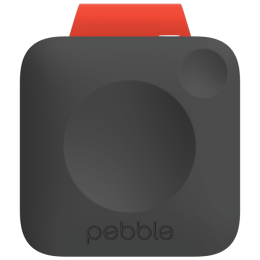
Still, wrist-worn devices aren’t the only bet that Pebble is placing. During a Kickstarter campaign for the Pebble 2 and Pebble Time 2, the company announced a third product called the Pebble Core, due out next year. The keychain-sized device won’t have a screen, but will pack Wi-Fi and a micro-SIM for 3G connectivity, along with GPS for run tracking and emergency alerts.
Migicovsky sees the Core as an anchor point for a post-smartphone era, in which we might load our bodies up with smartwatches, augmented reality glasses, connected headphones, and sensor-packed clothing. The Pebble Core could provide a data connection and additional processing power to all of these wearables.
“Right now, everything’s centralized around your phone. There’s going to be a little bit of divergence,” Migicovsky says.
Even as Pebble thinks about new sorts of gizmos, its minimalist perspective on smartwatches—that they shouldn’t be a full-blown smartphone on your wrist—remains unique among the many companies who’ve entered the market. Whatever the future holds for the company, that’s a perspective worth having.
Fast Company , Read Full Story
(56)




